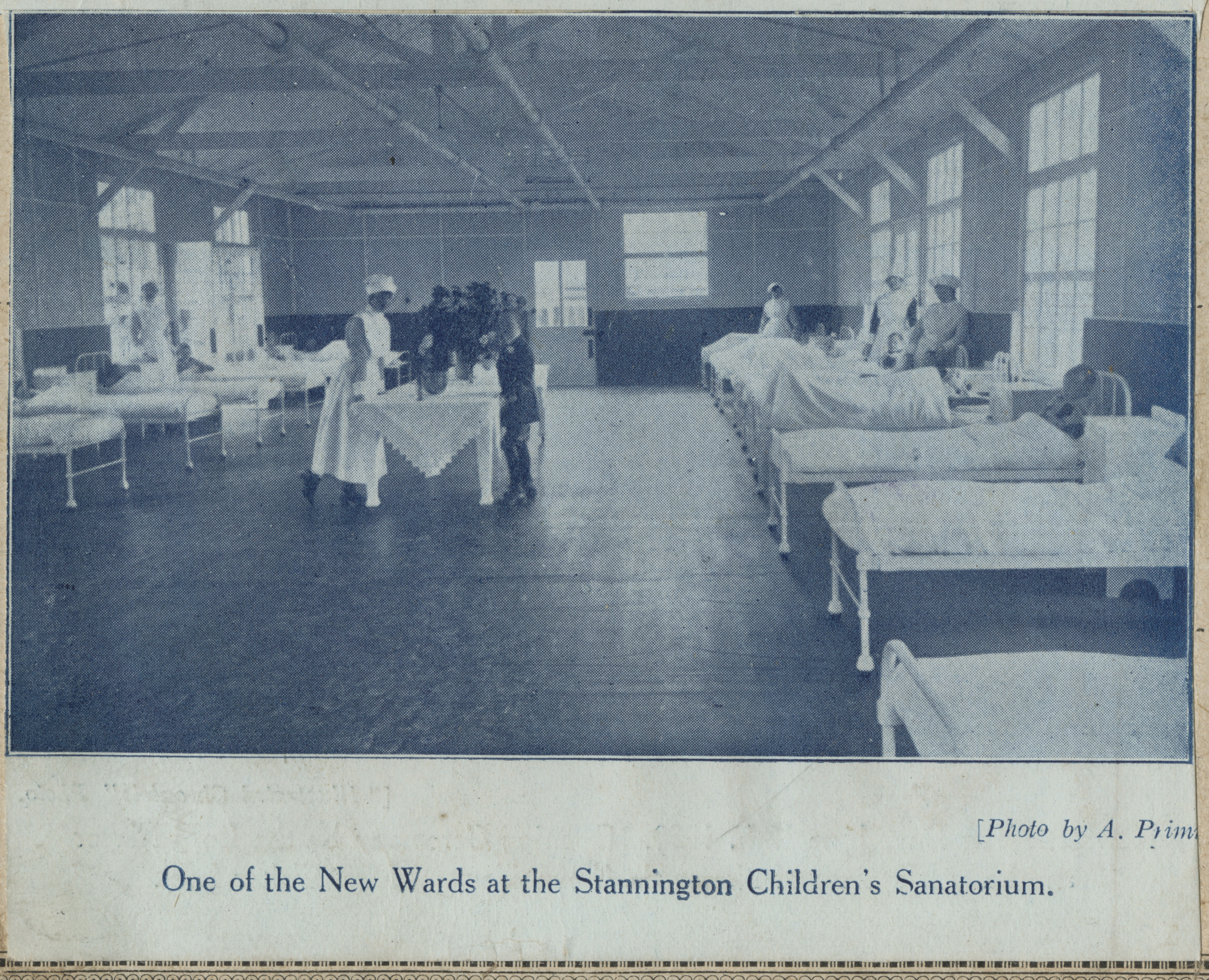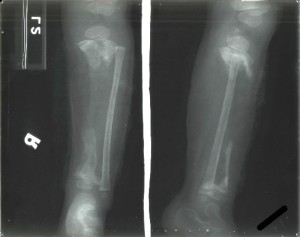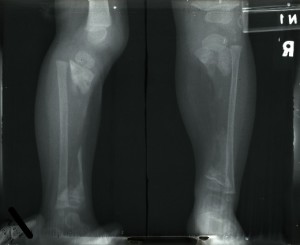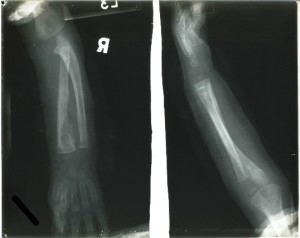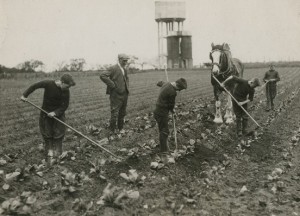Previous blog postings have touched upon how the history of Stannington Sanatorium and the people involved in making the idea of a children’s tuberculosis hospital a reality. Roland Philipson was one such person, whose contribution of £5000 allowed the building of the sanatorium and the initial intake of 100 patients in 1908. However, Philipson was not the only philanthropist to come to the aid of Stannington Sanatorium. Many others offered financial donations towards the cause of children’s tuberculosis, a few of which are detailed below.

(NRO 10321-1)
Mr A.E. Ward, Trustee of the late Mr Robert Scott – Scott Trust
A large financial contributor to the Stannington Sanatorium vision was Mr A.E Ward, who acted on behalf of the late Mr Robert Scott. Robert Scott had been involved in the investigation of the curability of tuberculosis, and it was through his investigations that he contracted tuberculosis himself and subsequently died of the disease. Upon his death he left a sizeable trust fund, overseen by his friend Mr A.E. Ward, which was to be used for local charities in Northumberland. Due to the nature of Mr Scott’s death, Mr Ward saw the scheme for a children’s tuberculosis hospital at Stannington to be a fitting receivership for the ‘Scott Trust’ and donated £500 in the first instance providing that further local support was forthcoming.
As part of the opening ceremony of the Sanatorium, Mr Ward made a further donation of £500 from the Scott Trust, making his overall contribution to the Children’s Sanatorium £1000. An additional contribution of £1000 was made towards an Endowment Fund that was set up on behalf of the Sanatorium.
In light of his significant financial contributions, a marble tablet was installed within the Sanatorium in memorial to Mr Robert Scott. This was unveiled as part of the opening ceremony by his friend and the trustee of the Scott Trust, Mr A.E. Ward.
The Lady Stephenson Wing
On opening the Stannington Sanatorium in 1907, it was noted by Dr. T.M. Allison that a secondary centre should be added to wards treating tuberculosis of the lungs, for those children suffering from ‘localised tuberculosis’ or extrapulmonary tuberculosis (bones, joints, glands).
This extension of the hospital became a reality in 1911 through a generous donation from the Lord Mayor of Newcastle, Sir William Stephenson. Following his first visit to the Sanatorium, Sir W.H. Stephenson enquired as to the cost of building and equipping a new wing and subsequently, after consulting his daughters, donated the full cost of £4000.
The fully furnished and equipped West Wing consisted of two floors each with two wards containing 8 beds. It also held a medical aspect to it containing a dispensary, a bacteriological room, an examination room and operating room. The new wing was to accommodate up to 50 additional patients and had the facilities to treat surgical cases, now allowing for the treatment of all types of tuberculosis.
The foundation stone for the West Wing was laid on the 13th August 1911 by the Lady Mayoress of Newcastle, Charlotte Stephenson. Miss Stephenson, the eldest daughter of Sir William Stephenson, had previously held the title of Vice-President of the Poor Children’s Holiday Association and Rescue Agency. Although she died in 1914, Miss Stephenson’s obituary found in the Newcastle Daily Journal from 7th July 1914, commended her on her philanthropic work with the association and noted she was in large part responsible for the addition of the new wing at Stannington. The West Wing was re-named ‘The Lady Stephenson Wing’
The Lady Stephenson Wing was opened on 28thOctober 1911 with the ceremony being overseen by Earl Grey (Morpeth Herald and Reporter 27/10/1911).
Brough Wing
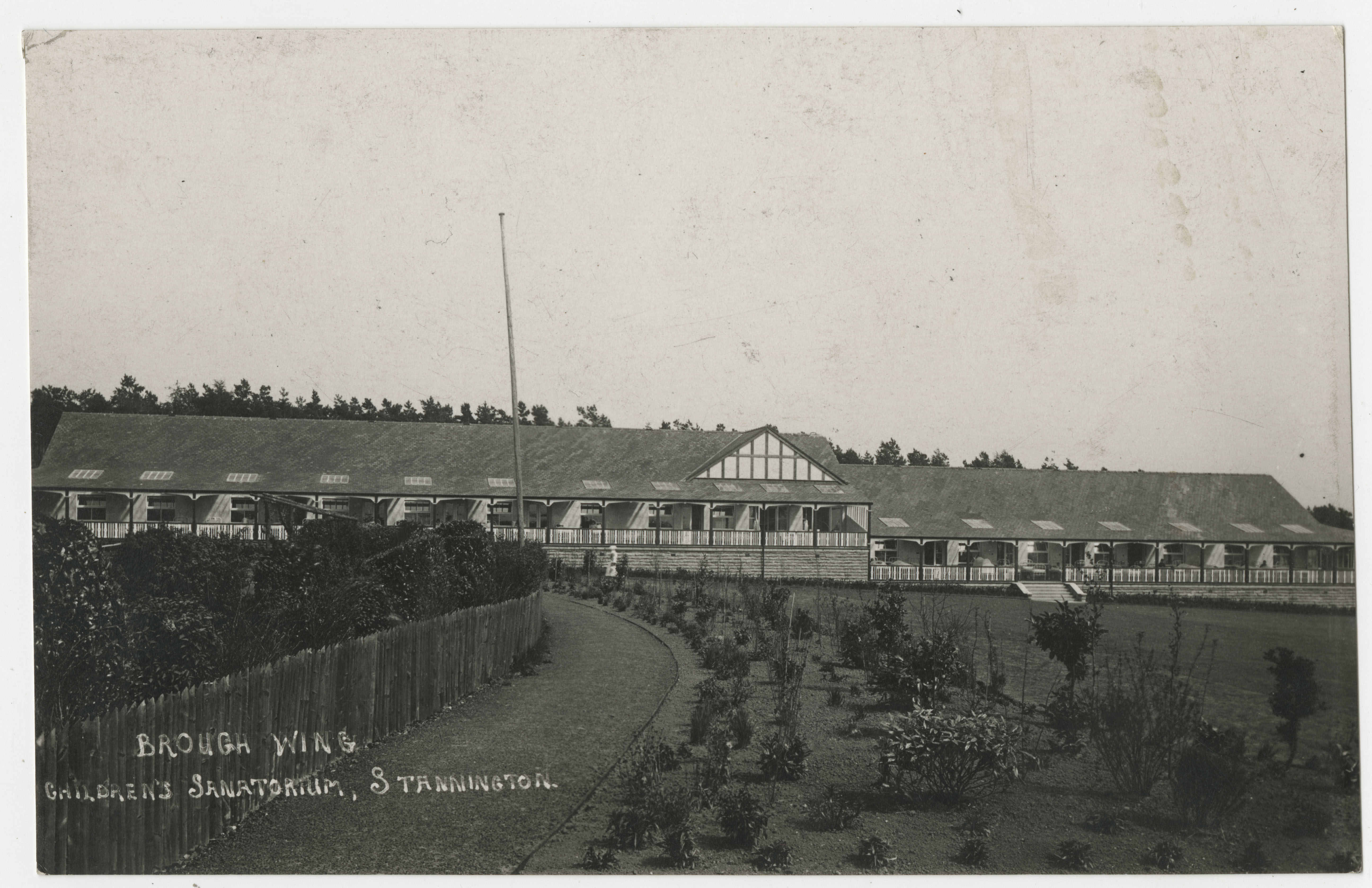
(HOSP-STAN-11-01-42)
Following in the footsteps of The Lady Stephenson Wing, a second additional wing was added to Stannington Sanatorium in 1926. In 1925 J.W. Brough generously funded the building of a new wing to increase capacity by another 30 beds bringing the total capacity up to 300 patients in total (Yorkshire Post 24/01/1925).
Duke of York opened the new wing presenting J.W. Brough with a silver salver, the gift of the Poor Children’s Holiday Association. He described Stannington as being ‘a national asset of the highest value’ (The Evening News 29/05/1926).
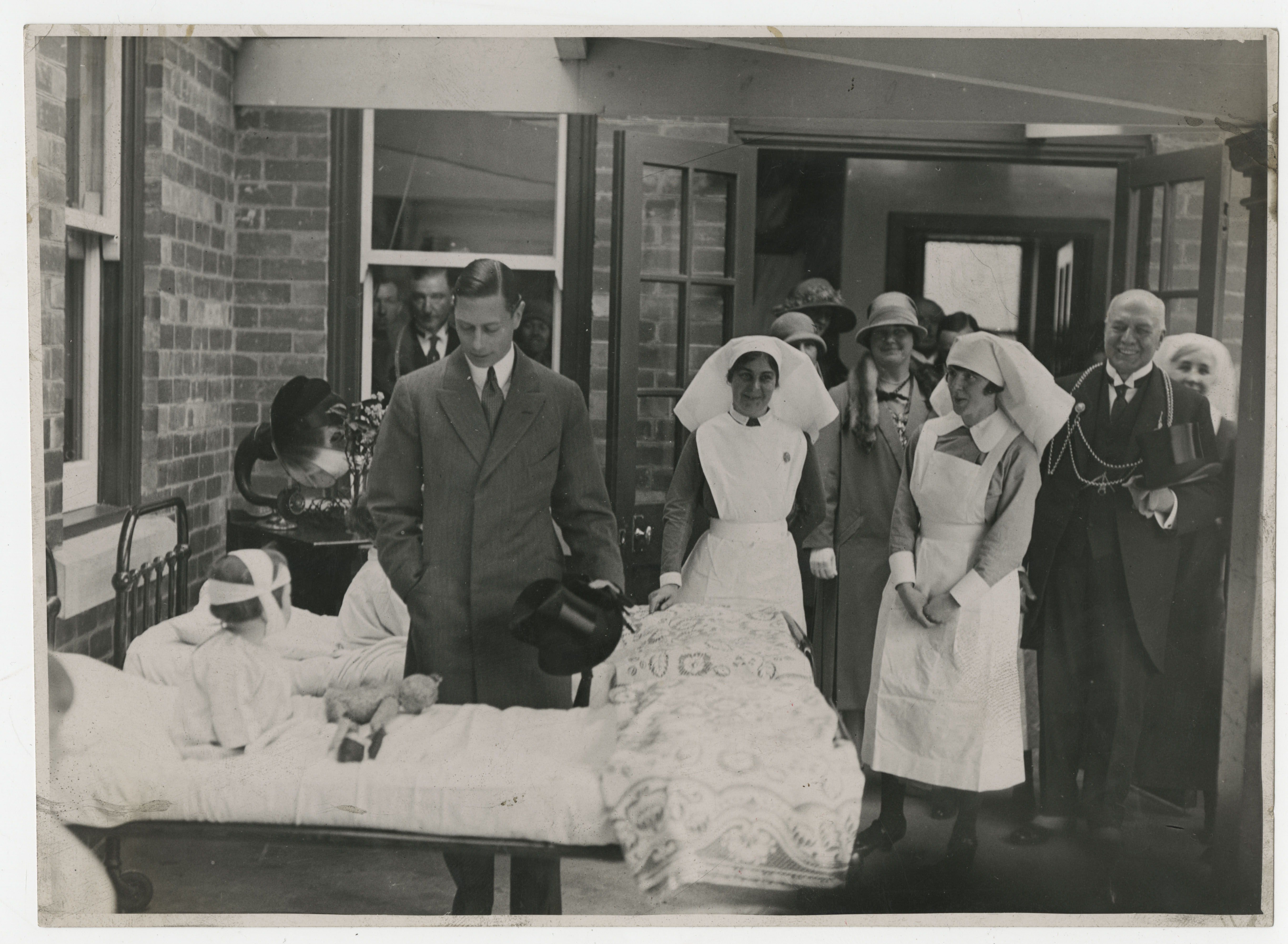
Of Additional Note
In addition to large scale contributors noted above, there are others who contributed a smaller, but no less significant amount. George Burton Hunter, of the Swan Hunter Shipbuilding Company, in collaboration with Mr T. Swinney, of Morpeth, placed motor cars at the disposal of the Sanatorium for situations which required moving patients to alternative hospitals, occasionally in emergency circumstances.
George Burton Hunter also supplied the engine necessary to supply power to the x-ray plant, the plant having been a gift from Miss Kate Stephenson, daughter of Sir William Stephenson.
Kate Stephenson’s donations also counted a new wing, the ‘Charlotte Stephenson Wing’ named for her late sister, added to the sanatorium in 1920. This wing came in addition to the ‘Ochiltree Ward’ a donated by the late Miss Ochiltree and the ‘United Services Ward.’ All three wings, catering for a further 120 patients, were opened by the Duke of Northumberland on 30th October 1920.

Sources
Wain, C (Ed). 1913. A Regeneration of Romance. Published by Andrew Reid.

